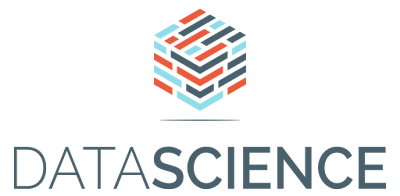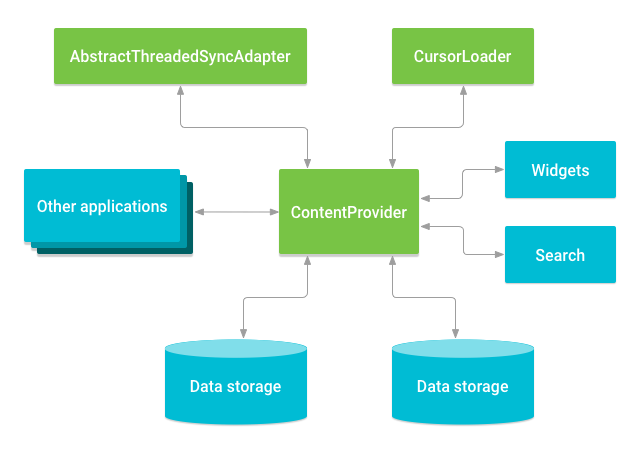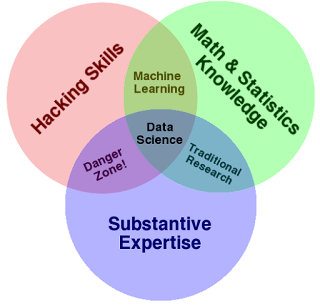10 Classic Algorithms and Methods of Data Science
Discover
key concepts for more than 10 classic algorithms and methods, including:
• A / B Test
• Detection of
anomalies
• Rules of Association
• Clustering
• Decision trees and
random forests
• Regression Analysis
• Analysis of social
networks
• Neural networks
To help you revisit
what you've learned, we've also included:
• Cheat sheets
comparing pros and cons of algorithms
• Summary of the final
chapters
• List of glossaries of
commonly used terms
What
is this book for?
You! This is a great
opportunity to learn more about data science,
technology and technology.
Why
should I be interested in data science?
You saw how the data
revolutionized the way we live and work. Google uses it to generate queries and
queries. Recently, data science
algorithms were also used to boost the development of digital personal
assistants and standalone vehicles. Understanding how these algorithms work is
crucial to assessing our potential impact on our future.
How
will this book add value to my work?
Data science algorithms can be applied across a wide range of
fields, whether for customer profiles or medical diagnostics, these algorithms
can provide critical information to help you make more strategic decisions.
What
do I have to say?
"... Having become
acquainted with the work of Annalyn Ng and Kenneth Soo some time ago, it is no
surprise that the book offers its title promise. It has a high level of quality
and is not limited to, in any way, but is not limited to this, and is abbreviated
and concise. "
A
/ B Test
The A / B test is a
method for comparing two versions of a Web page or one that is used to
determine which one is the best. AB is the most commonly used statistical
analysis of the variability of a statistical analysis.
Anomaly
detection
Anomaly detection is
the identification of data points, items, observations or events that do not
conform to the given pattern of a particular group. These anomalies occur very
rarely, but can mean a large and significant threat, such as cybercrime or
fraud. Detection of anomalies in the presence of an anomaly. Anomaly detection
is also known as detection of aberrant values.
Rules
of Association
An antecedent is an
item found in the data. A consequent is an item found in combination with the
antecedent. Association rules are created by analyzing data for frequent
patterns and then using support and trusting the criteria to identify the most
important relationships.
Decision
Trees and Random Forests
Decision trees are a
type of model used for both classification and regression. Trees respond to
sequential questions. The model behaves with "conditions that ultimately
produce a specific outcome. This is a great place to relax and unwind. Random
forests or random decision forests are a set of methods for classification,
regression, and other tasks, which are used to build a multitude of decision
trees. ) of individual trees. Random decision forests correct the habit of
decision trees to overcome in their training set.
Regression
analysis
In statistical
modeling, regression analysis is a set of statistical processes to estimate the
relationships between variables. ... Regression analysis is also used to
understand which independent variables are related to the dependent variable
and to explore the forms of these relationships.
Social
Networking Analysis
The analysis of social
networks (ANS) is the process of studying social structures through the use of
networks and graphic theory. It characterizes network structures in terms of
nodes (individual actors, people or things on the network) and the links,
borders, or links (relationships or interactions) that connect them.
Neural
networks
Neural networks have
wide appeal to many researchers because of their proximity to the structure of
the brain, a feature not shared by more traditional systems.
In an analogy to the
brain, an entity made up of interconnected neurons, neural networks consist of
interconnected processing elements called units, which respond in parallel to a
set of input signals given to each. The unit is the equivalent of its brain
counterpart, the neuron.



Very useful post. The information stated in the article is very practical. The writing style is also easily understandable. Looking for a big data courses Here it is 361 online! Learn from leading academicians in the field of big data and experienced industry practitioners at low cost.
ReplyDeletebig data course
big data training
hadoop training
Thanks a lot for sharing this classic algorithms.
ReplyDeleteBlue Prism Training Chennai
Blue Prism Training Institute in Chennai
UiPath Training in Chennai
Data Science Training in Chennai
RPA course in Chennai
RPA Training Institute in Chennai
Blue Prism Training in Anna Nagar
Blue Prism Training in T Nagar
I appreciate for your posting.
ReplyDeletelet view our website for IT algorthims training courses.
Database Administration Training | Database Administration course in chennai | Database Administration Training in chennai
Thanks for the post
ReplyDeleteLet view our website for IT training.
data science Training in chennai | best data science training class in chennai | data science course in chennai
Indeed a best blog i have come across in past few months. Way to go....
ReplyDeleteUIpath Training in Chennai
Big Data Hadoop Training in Chennai
Linux Training in Chennai
Cloud Computing Training in Chennai
Software Testing Training in Chennai
Indeed a best blog i have come across in past few months. Way to go....
ReplyDeleteUIpath Training in Chennai
Big Data Hadoop Training in Chennai
Linux Training in Chennai
Cloud Computing Training in Chennai
Software Testing Training in Chennai
I am always astounded concerning the remarkable things served by you.
ReplyDeleteAngularjs Training in Chennai
MCSE Training in Chennai
AI Training in Chennai
SEO Training in Chennai
Iam just always astounded concerning the remarkable things served by you.
ReplyDeleteAngularjs Training in Chennai
MCSE Training in Chennai
AI Training in Chennai
SEO Training in Chennai
ReplyDeleteThanks For Sharing Great Content With your Lovely Audience , hey Are You Asking me About Business Association I come With Best Services, Simply Go on Play Store And Download Business Community Platform App Keep Sharing With your Friends